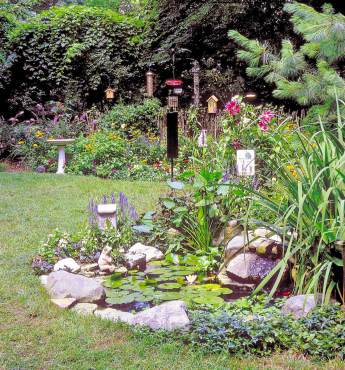 What a wonderful spring we had, with lots of moisture and late winter snow in the mountains.
What a wonderful spring we had, with lots of moisture and late winter snow in the mountains.
All that is good for the birds and their nesting activities that are ongoing. Every year, we hear of some illness issues that pop up from time to time with the birds in local backyards. To alleviate some of this, you can follow my tips.
Healthy Bird-Feeding Techniques
- Bird feeders with cracks and crevices are difficult to sanitize and should not be used. Replace them with new feeders.
- Focus on using only feeders that can be easily cleaned.
- Clean feeders, birdbaths and all hardware every few weeks with a 10 percent bleach solution (one part bleach to nine parts water). Rinse thoroughly and allow to completely dry before refilling feeders.
- Periodically move feeders to new locations in the yard to avoid the buildup of waste materials and feces. Be sure to always keep the ground below and around the feeders clean. Rake and discard seed debris and bird droppings on a regular basis.
- Limit the amount of seed provided in feeders to only the amount birds will consume in one or two days. The birds will always return to your yard to check out the feeders, even if you take them down for a number of days for cleaning or a short vacation.
- Give the birds more space. The addition of more feeders, spread far apart from one another, will reduce the crowding of birds that is around a single feeder. This will reduce the birds’ stress and the potential for disease transmission between healthy and sick birds.
- Store all bird seed in rodent- and insect-proof containers to avoid contamination.
- Always discard seed that has become wet.
- Should you find a dead bird, use gloves while handling it and always wash your hands with antibacterial soap after working with your feeders.
Backyard Bird Feeding
As a young child when I grew up in Red Wing, Minn., I remember my father’s instructions on feeding the birds. He would say every spring when the migratory birds had arrived and babies were popping out, “Don’t feed the birds, as they need to learn how to naturally forage on their own.” Well, after I put my jar of peanut butter away for the season, I would still sneak a little out where Dad couldn’t see it, at least I thought he couldn’t.
The following hints are important to pass on to your neighbors, friends and family, as to why summer backyard bird feeding is so important. (Dad would be proud of me now!)
Bird feeding provides many of the following benefits for birds in our yards:
- The key to the conservation of bird populations is in providing the habitats needed for their natural reproduction and sustained survival. Interaction and education are the ultimate key, because we must know something before we can love it — and we protect only what we love. If we learn about birds through the joy and excitement of attracting them to our yards, then we are sure to grow in our desire to protect them.
- More than a hundred North American bird species supplement their natural diets with bird seed, suet, fruit and nectar obtained from feeders.
- Access to abundant and healthy food supplies is important to birds regardless of the season. Bird feeders provide a portion of these important nutritional needs for your backyard birds throughout the year.
- Birds with access to backyard feeders benefit greatly from their ability to spend less time foraging for food and more time engaging in activities that enhance their health and safety.
These activities can include:
Nesting: Feeders allow breeding birds to spend less time searching for food and more time selecting better nesting sites and constructing higher quality nests. Adults will also have more time available for protecting their nest, eggs and young from predators.
Research studies have shown that birds with access to bird feeders will often lay their eggs earlier than those without feeders. This is significant because earlier broods typically have better rates of survival and fledging success than later broods.
When abundant food is accessible to parent birds, it means that more food is provided to their chicks. This extra nutrition can increase the nestlings’ rate of growth and reduce aggression among nest siblings.
Access to bird feeders allows breeding females to spend less time foraging, which leads to better protection of eggs from predators, earlier fledging of the nestlings and higher survival rates of the brood.
Preening: Less time spent foraging, especially during harsh weather conditions, provides more time to keep feathers in top flight condition to avoid predators and to insulate themselves from the elements.
Vulnerability: Birds are very vulnerable to predators while searching for food. The distraction of foraging results in a reduced ability to focus on dangers and threats from predators. Less time spent foraging means more time spent being vigilant in spotting a predator in time to successfully evade it.
Molting: Molting takes tremendous energy and nutrient resources for birds. The lack of an abundant and healthy food supply may result in the impaired ability to obtain the proper pigmentation for molting feathers and can lead to defects in feather formation such as being weak, frayed or curved.
So, get out there and feed your birds in your backyard. Not much is more enjoyable than seeing these hardy little creatures flitting around your trees and shrubbery.



























